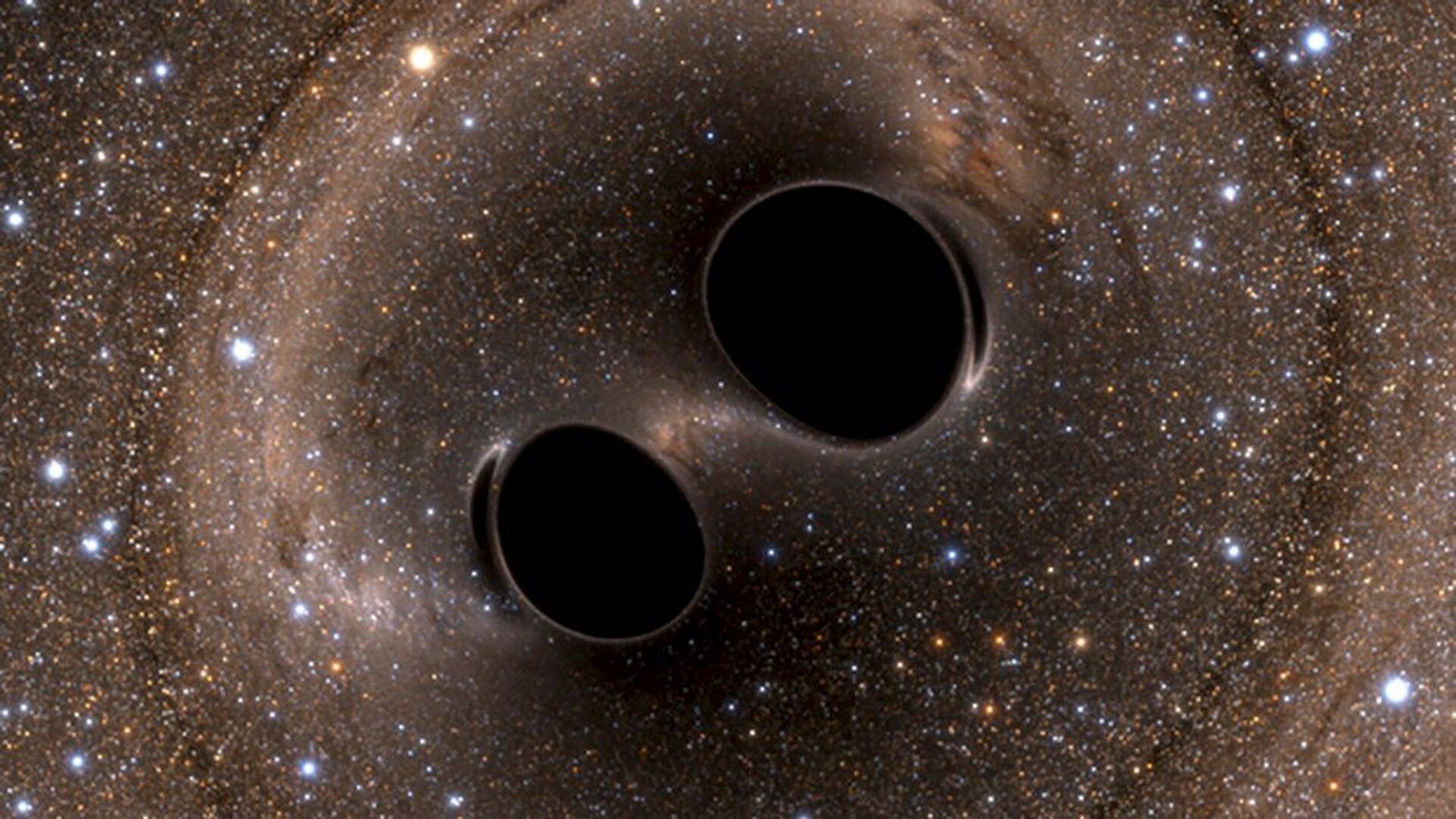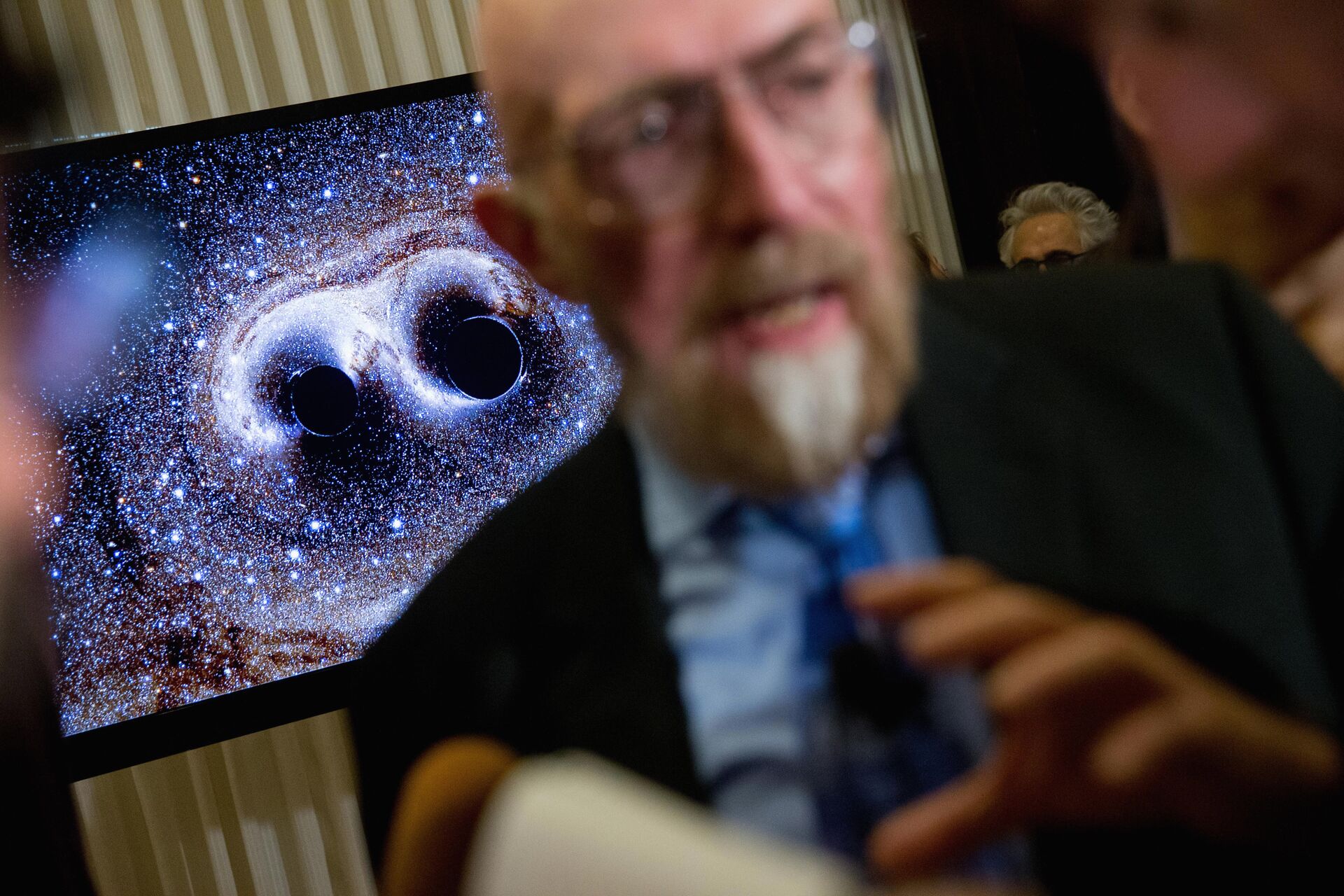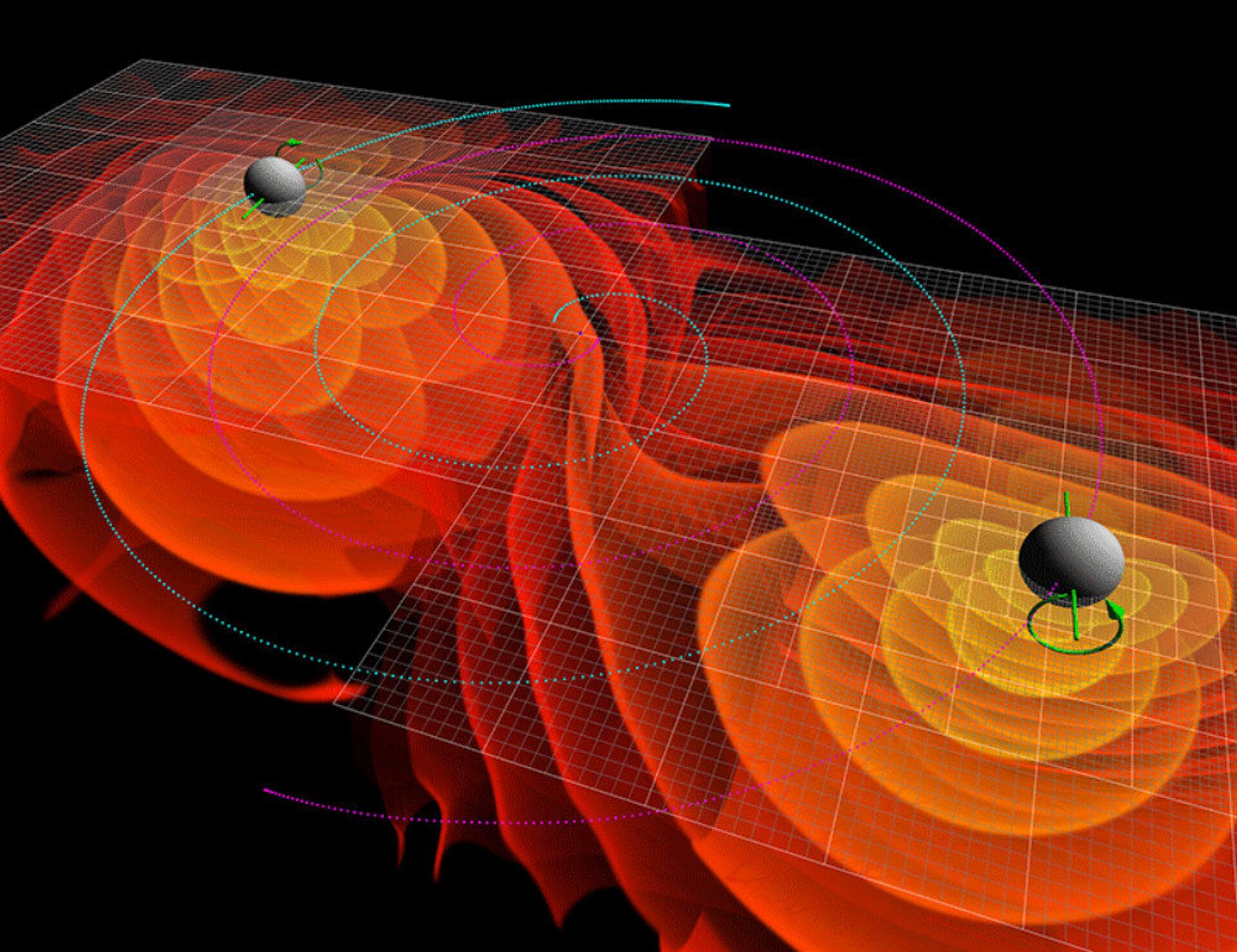'Tsunami' of Cosmic Gravitational Waves Offers Key to Probing Mystery of Universe's Evolution
14:43 GMT 09.11.2021 (Updated: 10:42 GMT 21.04.2023)

© REUTERS / The SXS Project
Subscribe
Although Albert Einstein introduced the phenomenon known as gravitational waves, scientists were only able to test general relativity for their presence six years ago, after scientists at the LIGO and Virgo collaboration detected for the first time ripples in space and time caused by the merging of two black holes.
A collaborative team of scientists have uncovered the largest number of gravitational waves detected, according to a paper pre-published on the server ArXiv on 8 November.
35 new detections of gravitational waves, generated by pairs of black holes and neutron stars smashing together, were made by an international team of scientists, including researchers at the Australian National University (ANU), in November 2019 and March 2020.

visual of gravitational waves from two converging black holes is depicted on a monitor behind Laser Interferometer Gravitational-Wave Observatory (LIGO) Co-Founder Kip Thorne as he speaks to members of the media following a news conference at the National Press Club in Washington, Thursday, Feb. 11, 2016
© AP Photo / Andrew Harnik
The breakthrough was achieved using the “Laser Interferometer Gravitational-wave Observatory" (LIGO) and the Virgo interferometer.
Combining gravitational wave data from the Virgo interferometer w/ electromagnetic observations helped identify a gravitational wave produced by the collision of 2 neutron stars. One impressive ex of the emerging practice of multimessenger #astronomy https://t.co/gwNqHkoN7A pic.twitter.com/MzFjumCU85
— PNASNews (@PNASNews) March 1, 2019
The “tsunami" of discoveries was hailed as a "major leap forward in our quest to unlock the secrets of the universe's evolution" according Professor Susan Scott of the ANU Centre for Gravitational Astrophysics.
"We've detected 35 events. That's massive. In contrast, we made three detections in our first observing run, which lasted four months in 2015-16," she added.
According to the researcher, observing the “masses and spins” of the black holes in the binary systems offers a glimpse at how the systems “got together in the first place".

Numerical simulations of the gravitational waves emitted by the inspiral and merger of two black holes
© NASA . Ames Research Center/C. Henze
The research has also raised new questions, such as whether the system originally formed with two stars that spent their life cycles together to become black holes, or the two black holes had been thrust together in a “dynamical environment”, like the one generated at the centre of a galaxy.
"This really is a new era for gravitational wave detections and the growing population of discoveries is revealing so much information about the life and death of stars throughout the universe," Scott was cited as saying.
